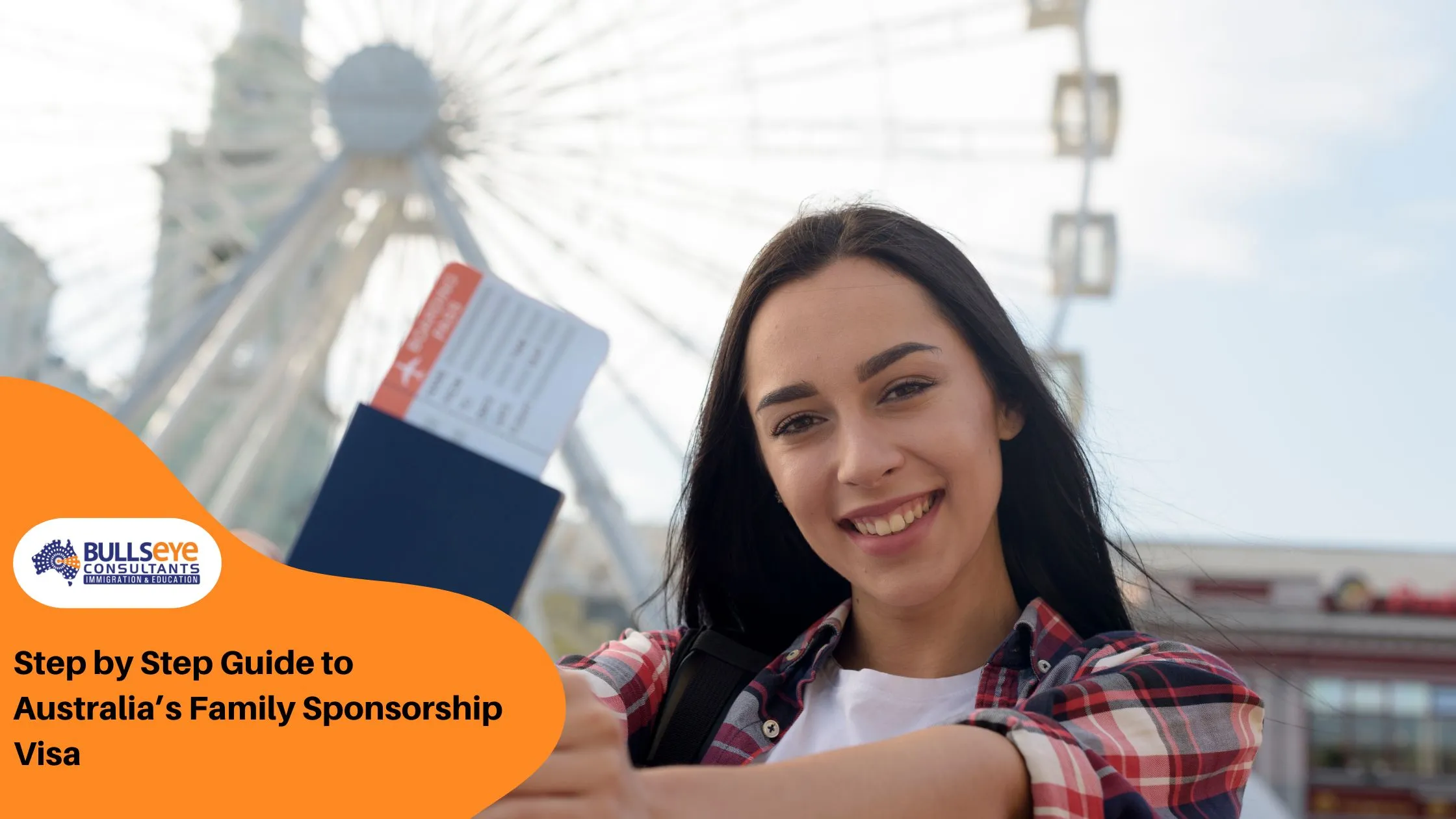Australia has long been a country that values family unity. Suppose you are an Australian citizen, permanent resident, or eligible New Zealand citizen. In that case, you can bring your loved ones to live with you in Australia through one of the various family sponsorship visa options. Whether you want to sponsor your partner, parent, child, or other close relative, understanding the correct visa pathway is critical.
This blog covers everything you need to know about Family Sponsorship Visas in Australia for 2025, including visa types, eligibility, costs, processing times, and expert tips for a successful application.
What Is a Family Sponsorship Visa in Australia?
A Family Sponsorship Visa allows Australian residents to sponsor their family members to live in Australia either permanently or temporarily. It\’s part of Australia\’s broader migration program, designed to support family reunification and community stability.
Who Can Sponsor a Family Member?
To sponsor a family member, you must be at least 18 years of age and either an Australian citizen, a permanent resident of Australia, or an eligible New Zealand citizen. You should also demonstrate the capacity to provide financial support and accommodation to your family member. Sponsors must meet certain character and sponsorship history requirements. If you\’ve sponsored someone before and breached conditions, you might be ineligible for a period of time.
Types of Family Visas Available in 2025
Australia\’s immigration program offers several visa subclasses under the family stream. The most common types are:
Partner Visas
These visas are for spouses or de facto partners of Australian citizens or permanent residents. You can apply either onshore (Subclass 820/801) or offshore (Subclass 309/100). The visa is generally granted in two stages: first, a temporary visa, followed by permanent residency.
Parent Visas
If you wish to bring your parents to Australia, there are a few options. The Contributory Parent Visa (Subclass 143) offers faster processing but comes with a higher cost. The standard Parent Visa (Subclass 103) is more affordable but can take decades to process. For temporary stays, the Sponsored Parent (Temporary) Visa (Subclass 870) allows parents to stay for up to 10 years without the need for permanent residency.
Child Visas
These are designed for dependent children of eligible sponsors. They can apply from inside Australia (Subclass 802) or outside (Subclass 101). The child must be under 18 or a full-time student dependent on the sponsor.
Other Family Visas
There are also visas for other family members in specific circumstances, such as the Aged Dependent Relative Visa, Carer Visa, and Remaining Relative Visa. These visas require that the applicant has no other close family members overseas and meets health and character standards.
General Eligibility Requirements
Each visa subclass has its own specific criteria, but there are general requirements all applicants must meet:
- An eligible family member must sponsor you.
- You must pass health and character checks.
- If applying for a partner visa, you must provide genuine evidence of your relationship.
- For parent visas, an assurance of support may be required.
- Children must be dependent and not married or in a de facto relationship.
- Some visa types require the sponsor to act as a financial guarantor.
Visa Costs for Family Sponsorship
Costs for family visas can vary widely depending on the subclass. Partner visas are among the most expensive, starting at approximately AUD $8,850. Parent visas—especially the contributory versions—can cost upwards of AUD $47,000. Child visas generally cost less, with application fees starting around AUD $2,700. Additional expenses such as health checks, police clearances, translations, and, if applicable, migration agent fees can also apply.
Processing Times
Processing times depend on the visa subclass and the current demand. Partner visas can take between 12 to 24 months. Contributory Parent Visas may take around 4 to 6 years, while standard Parent Visas can take over 20 years due to the limited number of places allocated each year. Child visas generally process faster, typically within 12 to 16 months. Other family visas, like the Remaining Relative Visa, may have extremely long waiting periods, sometimes over a decade.
Step-by-Step Application Process
Step 1: Determine the Right Visa Type
Use the Department of Home Affairs\’ Visa Finder or consult a registered migration agent to choose the most appropriate family visa option based on your relationship and goals.
Step 2: Gather Required Documents
Each visa will have its own documentation checklist, but you should expect to prepare identity documents, relationship evidence, financial proof, health assessments, police clearances, and possibly an assurance of support.
Step 3: Submit Your Application
Most family visa applications are lodged online through your ImmiAccount. Some paper-based applications are still accepted, depending on the subclass.
Step 4: Wait for Processing and Communicate with the Department
After applying, you may be contacted for additional information or interviews. Ensure all correspondence is responded to promptly and professionally.
Step 5: Receive Your Visa Outcome
If approved, your family member can migrate to or remain in Australia. If the visa is refused, you may have appeal options through the Administrative Appeals Tribunal (AAT).
Expert Tips for Success
- Ensure all documentation is truthful and complete. Incomplete or misleading information can delay or ruin your application.
- Demonstrate genuine intent. This is especially important for partner and carer visas.
- Understand the financial obligations. Be aware of the assurance of support requirements and long-term costs.
- Seek professional guidance. A registered migration agent or immigration lawyer can help avoid errors that could lead to delays or rejection.
Common Questions About Family Sponsorship in Australia
Can I sponsor more than one family member?
Yes, but each application must be submitted separately and meet all eligibility requirements.
Is a job required to sponsor a family member?
Not always, but you must show that you can provide financial support and meet sponsorship obligations.
Can my sponsored family member work in Australia?
This depends on the visa. Partner and child visa holders typically have work rights, whereas some parent visa holders may not be permitted to work.
How long does the sponsorship obligation last?
In most cases, sponsors are responsible for providing financial support for up to 2 years, but this may be longer, depending on the visa.
Can I sponsor my sibling?
There is no general visa for siblings; however, in rare cases, a Remaining Relative Visa may be applicable if the applicant has no close family members living outside Australia.
Final Thoughts
Applying for a Family Sponsorship Visa in Australia can be one of the most life-changing decisions you\’ll make. Whether you\’re reuniting with a partner, welcoming your parents, or helping your child build a future here, having the proper guidance and up-to-date information can make the journey smoother.
If you\’re unsure which visa is right for your situation, consider speaking to a registered migration agent for personalised advice. Australia can be one of the most life-changing decisions you\’ll make. Whether you\’re reuniting with a partner, welcoming your parents, or helping your child build a future here, having the proper guidance and up-to-date information can make the journey smoother.
If you\’re unsure which visa is right for your situation, consider speaking to a registered migration agent Brisbane for personalised advice.









